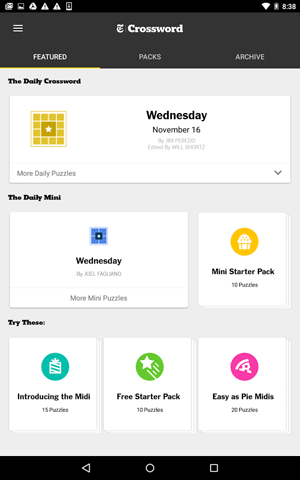

Maleska until his death in 1993 and the current editor, Will Shortz. There have been four editors of the puzzle: Margaret Farrar from the puzzle's inception until 1969 Will Weng, former head of the Times ' metropolitan copy desk, until 1977 Eugene T. That first daily puzzle was published without an author line, and as of 2001 the identity of the author of the first weekday Times crossword remained unknown. In 1950, the crossword became a daily feature.

The puzzle proved popular, and Sulzberger himself authored a Times puzzle before the year was out. The motivating impulse for the Times to finally run the puzzle (which took over 20 years even though its publisher, Arthur Hays Sulzberger, was a longtime crossword fan) appears to have been the bombing of Pearl Harbor in a memo dated December 18, 1941, an editor conceded that the puzzle deserved space in the paper, considering what was happening elsewhere in the world and that readers might need something to occupy themselves during blackouts. The first puzzle ran on Sunday, February 15, 1942. History Īlthough crosswords became popular in the early 1920s, The New York Times (which initially regarded crosswords as frivolous, calling them "a primitive form of mental exercise") did not begin to run a crossword until 1942, in its Sunday edition. The standard daily crossword is 15 by 15 squares, while the Sunday crossword measures 21 by 21 squares. The larger Sunday crossword, which appears in The New York Times Magazine, is an icon in American culture it is typically intended to be as difficult as a Thursday puzzle. The crosswords are designed to increase in difficulty throughout the week, with the easiest puzzle on Monday and the most difficult on Saturday. The puzzle is created by various freelance constructors and has been edited by Will Shortz since 1993. The New York Times crossword puzzle is a daily American-style crossword puzzle published in The New York Times, online on the newspaper's website, syndicated to more than 300 other newspapers and journals, and on mobile apps. Daily puzzle published in The New York Times


 0 kommentar(er)
0 kommentar(er)
